Anthony Lane in The New Yorker:
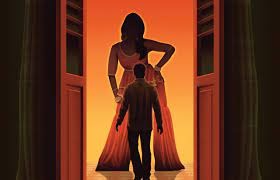 Trying to sort out who is who, and what everybody wants, is no easy task in “Joyland,” a début feature from the Pakistani director Saim Sadiq. In Lahore, a woman named Nucchi (Sarwat Gilani), who already has three daughters, remarks that her water has broken; she might as well be announcing that dinner is served. For the birth of her fourth child, she is ferried to hospital on the back of a moped driven by Haider (Ali Junejo), whom we take to be her husband. Not so. He is, in fact, the brother of her husband, Saleem (Sameer Sohail). Haider is married to Mumtaz (Rasti Farooq); they have no offspring, to the dismay of his aged father, known as Abba (Salmaan Peerzada). All of the above inhabit one household. It’s not a peaceful place, or an especially happy one, but it’s home.
Trying to sort out who is who, and what everybody wants, is no easy task in “Joyland,” a début feature from the Pakistani director Saim Sadiq. In Lahore, a woman named Nucchi (Sarwat Gilani), who already has three daughters, remarks that her water has broken; she might as well be announcing that dinner is served. For the birth of her fourth child, she is ferried to hospital on the back of a moped driven by Haider (Ali Junejo), whom we take to be her husband. Not so. He is, in fact, the brother of her husband, Saleem (Sameer Sohail). Haider is married to Mumtaz (Rasti Farooq); they have no offspring, to the dismay of his aged father, known as Abba (Salmaan Peerzada). All of the above inhabit one household. It’s not a peaceful place, or an especially happy one, but it’s home.
That home is worth dwelling on, for it feels like a book of short stories. Not for a while—not, perhaps, since Greta Gerwig’s “Little Women” (2019)—have I been struck by so potent a sense of place. The daily routine revolves around a central courtyard, where Abba, a widower in a wheelchair, presides. “My family has lived here since before Partition,” he says. Space is tight, and one of the little girls often shares a bed with Haider and Mumtaz. The air-conditioning breaks down. (Power outages are frequent across the city, and some scenes are illuminated by cell-phone flashlights.) The fabric of the film is a weaving of new and old; we hear talk of Netflix subscriptions, yet one shot, of an open doorway, has the pious composure of a Pieter de Hooch interior, from seventeenth-century Holland, and the plot begins, if you please, with a goat being slaughtered in the courtyard. Blood pools darkly on the tiled floor.
More here.
 Drug overdose deaths have steadily increased in the US since 1999, largely due to the proliferation of prescription and illicit opioids like morphine, oxycodone and fentanyl.
Drug overdose deaths have steadily increased in the US since 1999, largely due to the proliferation of prescription and illicit opioids like morphine, oxycodone and fentanyl.
 As an insider observing this food fight, it is surreal to watch reporters and commentators promote the narrative that the government’s Likud-Jewish Power-Religious Zionism coalition and the Supreme Court exist on extreme opposing ends of the political spectrum. Their differences, when it comes to how they rule over the lives of Palestinians, are purely cosmetic. In essence, one camp wants to eat with their hands while the other wants to mandate forks and knives, but in both scenarios, Palestinian rights will be devoured.
As an insider observing this food fight, it is surreal to watch reporters and commentators promote the narrative that the government’s Likud-Jewish Power-Religious Zionism coalition and the Supreme Court exist on extreme opposing ends of the political spectrum. Their differences, when it comes to how they rule over the lives of Palestinians, are purely cosmetic. In essence, one camp wants to eat with their hands while the other wants to mandate forks and knives, but in both scenarios, Palestinian rights will be devoured. On the sunny first day of seminar, I sat at the end of a pair of picnic tables with nervous, excited 17-year-olds. Twelve high-school students had been chosen by the Telluride Association through a rigorous application process—the acceptance rate is reportedly around 3 percent—to spend six weeks together taking a college-level course, all expenses paid.
On the sunny first day of seminar, I sat at the end of a pair of picnic tables with nervous, excited 17-year-olds. Twelve high-school students had been chosen by the Telluride Association through a rigorous application process—the acceptance rate is reportedly around 3 percent—to spend six weeks together taking a college-level course, all expenses paid. Trying to sort out who is who, and what everybody wants, is no easy task in “Joyland,” a début feature from the Pakistani director Saim Sadiq. In Lahore, a woman named Nucchi (Sarwat Gilani), who already has three daughters, remarks that her water has broken; she might as well be announcing that dinner is served. For the birth of her fourth child, she is ferried to hospital on the back of a moped driven by Haider (Ali Junejo), whom we take to be her husband. Not so. He is, in fact, the brother of her husband, Saleem (Sameer Sohail). Haider is married to Mumtaz (Rasti Farooq); they have no offspring, to the dismay of his aged father, known as Abba (Salmaan Peerzada). All of the above inhabit one household. It’s not a peaceful place, or an especially happy one, but it’s home.
Trying to sort out who is who, and what everybody wants, is no easy task in “Joyland,” a début feature from the Pakistani director Saim Sadiq. In Lahore, a woman named Nucchi (Sarwat Gilani), who already has three daughters, remarks that her water has broken; she might as well be announcing that dinner is served. For the birth of her fourth child, she is ferried to hospital on the back of a moped driven by Haider (Ali Junejo), whom we take to be her husband. Not so. He is, in fact, the brother of her husband, Saleem (Sameer Sohail). Haider is married to Mumtaz (Rasti Farooq); they have no offspring, to the dismay of his aged father, known as Abba (Salmaan Peerzada). All of the above inhabit one household. It’s not a peaceful place, or an especially happy one, but it’s home. “Barbara Kassel”s evocative paintings explore the passage of time. From her loft in New York City, she paints interior and exterior views, creating a visual diary of daily life. Working with oil on panel, the smooth surfaces are meticulously rendered serene scenes. Warm reds and yellow embrace cooler blues and grays and invite the viewer into the large-scale works. Kassel describes the paintings in part biographical and instinctually narrative. Carefully exploring the world around her, she mixes observation and invention as she captures fleeting moments in time.”
“Barbara Kassel”s evocative paintings explore the passage of time. From her loft in New York City, she paints interior and exterior views, creating a visual diary of daily life. Working with oil on panel, the smooth surfaces are meticulously rendered serene scenes. Warm reds and yellow embrace cooler blues and grays and invite the viewer into the large-scale works. Kassel describes the paintings in part biographical and instinctually narrative. Carefully exploring the world around her, she mixes observation and invention as she captures fleeting moments in time.”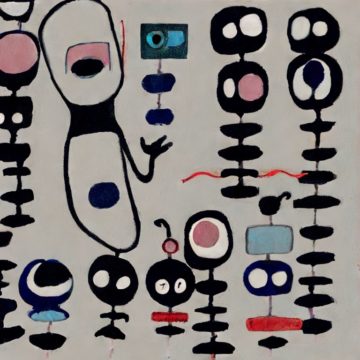 Jacob Browning and Yann Lecun in Noema:
Jacob Browning and Yann Lecun in Noema: David Van Reybrouk in Noema:
David Van Reybrouk in Noema: Daniel Bessner in Boston Review:
Daniel Bessner in Boston Review: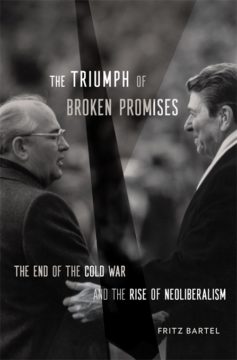 Max Krahé in Phenomenal World:
Max Krahé in Phenomenal World: I
I It’s a testament to Black endurance and brilliance that the little girl called Phillis Wheatley became, within 12 years of her arrival in Boston, the most significant African American poet of the 18th century. Yet, as
It’s a testament to Black endurance and brilliance that the little girl called Phillis Wheatley became, within 12 years of her arrival in Boston, the most significant African American poet of the 18th century. Yet, as  John Muir and Robert Underwood Johnson were unlikely allies in the war to preserve
John Muir and Robert Underwood Johnson were unlikely allies in the war to preserve 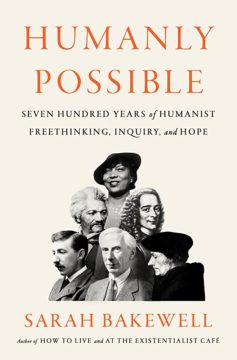 “I am human, and consider nothing human alien to me”: The famous line from the Roman playwright Terence, written more than two millenniums ago, is easy to assert but hard to live by, at least with any consistency. The attitude it suggests is adamantly open-minded and resolutely pluralist: Even the most annoying, the most confounding, the most atrocious example of anyone’s behavior is necessarily part of the human experience. There are points of connection between all of us weirdos, no matter how different we are. Michel de Montaigne liked the line so much that he had the Latin original — Homo sum, humani nihil a me alienum puto — inscribed on a ceiling joist in his library.
“I am human, and consider nothing human alien to me”: The famous line from the Roman playwright Terence, written more than two millenniums ago, is easy to assert but hard to live by, at least with any consistency. The attitude it suggests is adamantly open-minded and resolutely pluralist: Even the most annoying, the most confounding, the most atrocious example of anyone’s behavior is necessarily part of the human experience. There are points of connection between all of us weirdos, no matter how different we are. Michel de Montaigne liked the line so much that he had the Latin original — Homo sum, humani nihil a me alienum puto — inscribed on a ceiling joist in his library.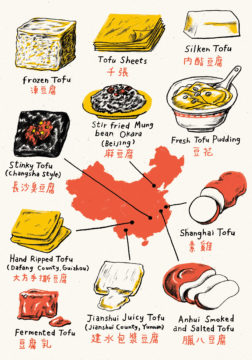 Guiyang didn’t have many restaurants, per se. The metropolis was more of a city-wide night market. Even in the pre-COVID days, streets like Qingyun Road were only half-filled with cars, to leave room for tents and tables that stretched to the horizon, and for smoke and steam that rose into the clouds. Eateries didn’t burden you with 14-page menus, common at Shanghainese or Northeastern restaurants. No — a làoguō 烙锅 shop sold laoguo (think Korean BBQ with more vegetables, cooked over a clay pot dome). A sīwáwa 丝娃娃 shop sold siwawa (shreds of 20-plus varieties of fresh and pickled vegetables that you roll into a thin, rice cake-like taco). And tofu stands sold tofu. But probably not the tofu you’re thinking of.
Guiyang didn’t have many restaurants, per se. The metropolis was more of a city-wide night market. Even in the pre-COVID days, streets like Qingyun Road were only half-filled with cars, to leave room for tents and tables that stretched to the horizon, and for smoke and steam that rose into the clouds. Eateries didn’t burden you with 14-page menus, common at Shanghainese or Northeastern restaurants. No — a làoguō 烙锅 shop sold laoguo (think Korean BBQ with more vegetables, cooked over a clay pot dome). A sīwáwa 丝娃娃 shop sold siwawa (shreds of 20-plus varieties of fresh and pickled vegetables that you roll into a thin, rice cake-like taco). And tofu stands sold tofu. But probably not the tofu you’re thinking of. There’s now an
There’s now an